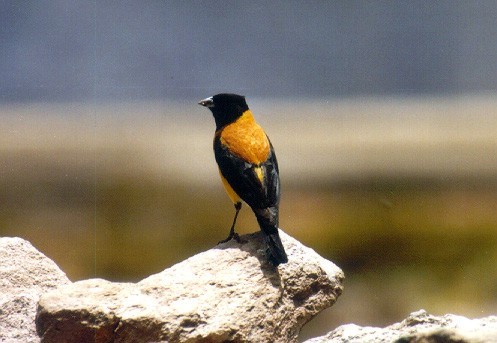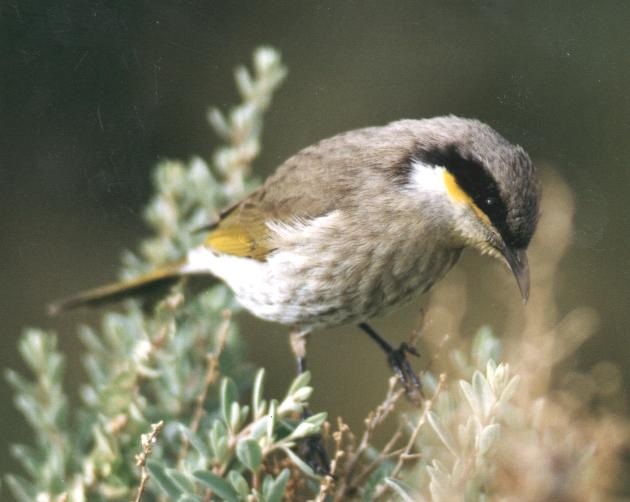
QUIZ 22
Bird photographed by Greg Brinkley.


QUIZ 23
With its black or blackish head and a golden chestnut back, the male Black-hooded Sierra Finch shows a golden yellow rump and blackish wings and tails feathers. The bird is bright golden yellow below, with breast and sides washed with golden brown. The lower flanks and abdomen are white. The birds from the northwest bolivian Altiplano have almost black wings. Females are similar but the head is dark grey, and palest on nape, nearly indistinguishable from the male Peruvian Sierra-finch (Phrygilus punensis), but shows brighter yellow underparts and... is often accompanied by male.
(This text has to be modified. Any comment will be appreciated.)
Bird photographed by JoŽlle Dugauquier.


QUIZ 24
The singing honeyeater is Australia's most widespread honeyeater, ranging across the continent west of the great dividing range from coast to semi-arid interior, cultivated land and gardens. It's a medium-sized honeyeater. Its head is distinctive, with long black stripe through eye and down nape over shorter yellow stripe from eye to ear-coverts. Below this runs a less conspicuous pale grey stripe, widening as it reaches nape. Upperparts are grey-brown, under-parts pale buff, with pale brownish streaks. Sexes are similar. Throughout it's range it frequents open scrubby shrubberies' wether in mallee or mulga or even coastal heaths. Singing Honeyeaters are rather sedentry in small numbers of two to five birds which feed solitarily. Foraging is done in low foliage where they switch between nectar, insects and fruit as the opportunity offers. Insects taken include beetles, weevles, moths, caterpillars, wasps, ants, flies and lerps. The honeyeaters also eat about 40 species of fleshy fruits. The seeds are swallowed but not digested so the birds act as dispersing agents. Despite its name, the Singing Honeyeaters is not an accomplished singer, it produces rather harsh calls but does advertise territory in rollicking duets between pairs. The nests are often parasitised by Pallid Cuckoos.
Bird photographed by Kevin Roberts.

Gallery overview
Quiz Statistics
Quiz results
Rules
Hall of Fame
More links !
